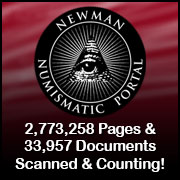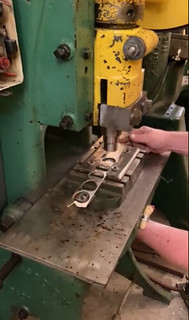
About UsThe Numismatic Bibliomania Society is a non-profit association devoted to the study and enjoyment of numismatic literature. For more information please see our web site at coinbooks.org SubscriptionsThose wishing to become new E-Sylum subscribers (or wishing to Unsubscribe) can go to the following web page link MembershipThere is a membership application available on the web site Membership Application To join, print the application and return it with your check to the address printed on the application. Print/Digital membership is $40 to addresses in the U.S., and $60 elsewhere. A digital-only membership is available for $25. For those without web access, write to: Charles Heck, Treasurer
AsylumFor Asylum mailing address changes and other membership questions, contact Chuck at this email address: treasurer@coinbooks.org SubmissionsTo submit items for publication in The E-Sylum, write to the Editor at this address: whomren@gmail.com BUY THE BOOK BEFORE THE COINSale CalendarWatch here for updates!
|
- WAYNE'S WORDS: THE E-SYLUM DECEMBER 15, 2019
- NEW BOOK: ARAB-SASANIAN NUMISMATICS AND HISTORY
- NEW BOOK: COINS OF CANADA 2020
- IN REMEMBRANCE: MILLARD W. HAJEK
- WEBBING DEFINITIONS ON THE NEWMAN PORTAL
- VIDEO: ELLSWORTH SHARES VISION FOR FUTURE
- NOTES FROM E-SYLUM READERS: DECEMBER 15, 2019
- MORE ON THE "SIGN OF THE 8"
- MORE ON BANKNOTE CATALOG WEB SITES
- VOCABULARY: GUILLOCHE, HALF-AND-HALF MEDAL
- EMMANUEL JOSEPH ATTINELLI JR., (1832-1895)
- NATHANIEL HAWTHORNE: GRANDFATHER’S CHAIR
- DOUG WINTER ON TROPHY GOLD COINS
- MR. LIMA'S 1927-D DOUBLE EAGLE
- STEINBERG'S INC SEEKS COLLECTOR WANTLISTS
- SELECTED MEDALS FROM HEDLEY BETTS
- DIX NOONAN WEBB PREPARES FIRST INDIAN SALE
- MEDALS OF THE SUN KING LOUIS XIV
- ATLANTIC CABLE MEDALS AND TOKENS
- A VISIT TO THE CARNEGIE HERO FUND COMMISSION
- TOKYO 2020 OLYMPIC GAMES MEDAL DESIGN
- HOW MUCH CASH IS IN HIDING?
- LOOSE CHANGE: DECEMBER 15, 2019
- MAN'S MISSION TO PHOTOGRAPH SITES ON BANKNOTES
- FEATURED WEB SITE: AETERNITAS NUMISMATICS
Click here to access the complete archive
Click here to unsubscribe (scroll down)
To comment or submit articles, reply to whomren@gmail.com
Content presented in The E-Sylum is not necessarily researched or independently fact-checked, and views expressed do not necessarily represent those of the Numismatic Bibliomania Society.
WAYNE'S WORDS: THE E-SYLUM DECEMBER 15, 2019
 New subscribers this week include: Adam L Spikes, and Mitch Sumner. Welcome aboard! We now have 6,061 subscribers.
New subscribers this week include: Adam L Spikes, and Mitch Sumner. Welcome aboard! We now have 6,061 subscribers.
NBS Members: It's that time of year again - please renew your membership by check or online with Paypal. For more information, see:
https://www.coinbooks.org/about/
membership.html
Thank you for reading The E-Sylum. If you enjoy it, please send me the email addresses of friends you think may enjoy it as well and I'll send them a subscription (but let me know if they are located in the European Union). Contact me at whomren@gmail.com anytime regarding your subscription, or questions, comments or suggestions about our content.
This week we open with two new books, an obituary, updates from the Newman Numismatic Portal, and notes from E-Sylum readers.
Other topics this week include the "sign of the 8", banknote catalog web sites, trophy gold coins, medals of the Sun King, the Atlantic Cable, the Carnegie Hero Fund Commission, and the 2020 Tokyo Olympics.
To learn more about Arab-Sasanian numismatics, Millard Hajek, Emmanuel Joseph Attinelli Jr., skeleton scrap, roller marks on U.S. banknotes, half-and-half medals, buttons made of pine-tree shillings, the 1888 Victoria Mohur, the 1915 Cuba gold peso, the 1927-D double eagle, and U.S. Mint coins dated 1964, read on. Have a great week, everyone!
Wayne Homren
Editor, The E-Sylum
NEW BOOK: ARAB-SASANIAN NUMISMATICS AND HISTORY
The Royal Numismatic Society's Special Publication No. 55 is available from Spink. Published in two volumes, Arab-Sasanian Numismatics and History during the Early Islamic Period in Iran and Iraq was edited by Susan Tyler-Smith. Here's some information from the Spink site. -Editor
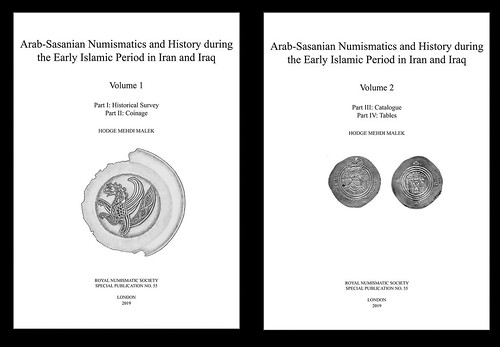
Arab-Sasanian Numismatics and History during the Early Islamic Period in Iran and Iraq (ed. Susan Tyler-Smith)
The Johnson Collection of Arab-Sasanian Coins
HODGE MEHDI MALEK
ROYAL NUMISMATIC SOCIETY
SPECIAL PUBLICATION NO. 55
London, 2019
ISSN 0080 4487
ISBN 0 901405 94 9
RRP: £95
This is the first major work to attempt a comprehensive study of the Arab-Sasanian silver coinage since Walker's 1941 Catalogue of the British Museum collection. It includes the latest research on the subject, both historical (chapters 1-4) and numismatic (chapters 5-15). All the coins (over 1,600), both silver drachms and copper fulus, in the Johnson collection are illustrated on the excellent plates. Where the Johnson collection does not have a specimen of an important coin an example is illustrated from another source, making this a truly important work.
For more information, or to order, see:
Arab-Sasanian Numismatics and History during the Early Islamic Period in Iran and Iraq (ed.
Susan Tyler-Smith) (https://spinkbooks.com/index.php?route=product/product&product_id=702)

NEW BOOK: COINS OF CANADA 2020
Trajan Media's Coin and Stamp Supplies division is offering the new edition of Haxby & Willey's Coins of Canada. Here's information from their web site. The publisher also offers a French language edition. -Editor
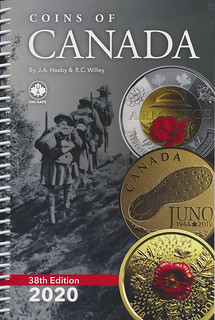

Coins of Canada — 2020 38th Edition by Haxby & Willey
$28.95
This popular catalogue by numismatists stalwarts J.A. Haxby and R.C. Willey covres all spectrums of numismatic collecting in Canada, including the French Regime, Pre-Confederation Coins (tokens), Canadian circulation coins, collector coins and sets from the Royal Canadian Mint, Dominion of Canada bank notes and Bank of Canada bank notes. This 704-page spiral catalogue includes images, varieties, mintages and valuations based on the various grading levels. The 2020 catalogue is a great resource at an excellent value.
Description
This popular catalogue by numismatists stalwarts J.A. Haxby and R.C. Willey covres all spectrums of numismatic collecting in Canada, including the French Regime, Pre-Confederation
Coins (tokens), Canadian circulation coins, collector coins and sets from the Royal Canadian Mint, Dominion of Canada bank notes and Bank of Canada bank notes. This 704-page
spiral catalogue includes images, varieties, mintages and valuations based on the various grading levels. The 2020 catalogue is a great resource at an excellent value.
Published by The Unitrade Press with Editor Robin Harris.
Additional information
Weight 1.05 kg
Dimensions 23 × 18 × 3 cm
For more information, or to order, see:
Coins of Canada — 2020 38th Edition by Haxby & Willey
(https://coinstampsupplies.com/product/coins-of-canada-2020-38th-edition-by-haxby-willey/)
2020 Monnaies du Canada (38th ed.) (http://www.unitradeassoc.com/Nowavailable.htm)
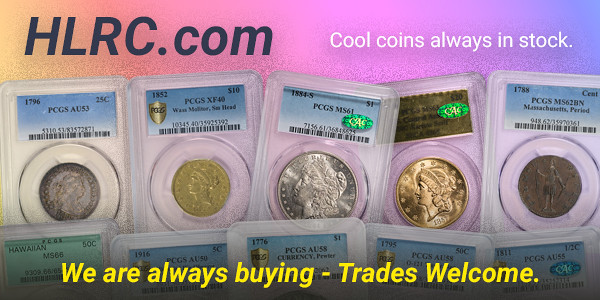
IN REMEMBRANCE: MILLARD W. HAJEK
MD TAMS Journal editor Jane Sears kindly shared this remembrance of founding member Millard W. Hajek. Thanks also to George Cuhaj for alerting us to the article. -Editor
Millard W. Hajek October 7, 2019
 The Maryland Token and Medal Society (MD TAMS) recently lost one of our Founding Fathers, Millard Hajek. Mill was one of those small handful of hobby enthusiasts
who got their heads together in 1979 and decided to form an organization for the collection and education surrounding Maryland Tokens and Medals. Millard was elected the first
President of this new organization. MD TAMS owes much of its success and longevity to Mill. He was a stalwart. Beside holding office on the MD TAMS board, he was involved in
almost all meaningful decisions made on behalf of our organization since its inception forty years ago until he was recently physically unable to attend our events.
The Maryland Token and Medal Society (MD TAMS) recently lost one of our Founding Fathers, Millard Hajek. Mill was one of those small handful of hobby enthusiasts
who got their heads together in 1979 and decided to form an organization for the collection and education surrounding Maryland Tokens and Medals. Millard was elected the first
President of this new organization. MD TAMS owes much of its success and longevity to Mill. He was a stalwart. Beside holding office on the MD TAMS board, he was involved in
almost all meaningful decisions made on behalf of our organization since its inception forty years ago until he was recently physically unable to attend our events.
He authored numerous articles for the Maryland TAMS Journal throughout the years. He wrote and published several of our Maryland TAMS reference books to help members research and catalog their holdings in these collect- ing areas. He contributed much as one of our representatives to the Maryland State Numismatic Association (MSNA). When MD TAMS was part of BANC, Mill was very active in helping BANC with the three local coin shows each year. He helped develop the concept of having MD TAMS Swap Meets each year to provide a great venue for MD TAMS members to get together to trade, buy and sell their collectibles and to talk about our hobby interests. He developed the "Literary Bucks" that we have given over the years to members who contribute to our outstanding Journal.
Mill did so much for our organization over the years that it is safe to say that his loss to MD TAMS will be extraordinary. MD TAMS will miss him greatly. This being said, Mill was an even better person than he was a hobbyist. He was so helpful to new hobbyists as I can personally attest . Millard was a great person and a personal friend and mentor. He will be missed by many and we will remember him as a cornerstone of our mutual hobby.
Ed Craig, President.
George Cuhaj submitted this photo of Will Mumford and Millard Hajek from a long-ago convention. Thanks. -Editor
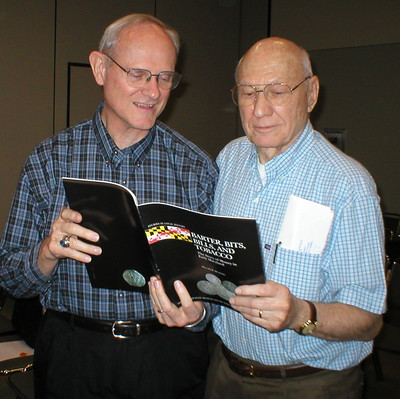
Will Mumford and Millard Hajek
For more information on Maryland TAMS, see:
http://www.mdtams.org/

WEBBING DEFINITIONS ON THE NEWMAN PORTAL
Newman Numismatic Portal Project Coordinator Len Augsburger provided this follow-up to our earlier discussion of 1943 steel cent webbing. -Editor
More on Webbing, or, “The Specifics of Scissel” --
“Webbing” is one of a few useful words to describe the leftover scrap from the planchet cutting process. The Dick Johnson Encyclopedia gives more precise definitions, ranging from the most general to the most specific:
Shruff is described as all the metal rubbish from the minting process, including clippings, blanks, mis-struck pieces, etc., of which scissel would be a subset.
Scissel is the metal scrap from blanking and trimming and for the most part consists of skeleton scrap, but also includes circular rings remaining after cutting down oversize planchets.
Skeleton Scrap is the webbing that most of us think of, as it is the most visually striking of the remnants. For some odd reason, all these words start with S.
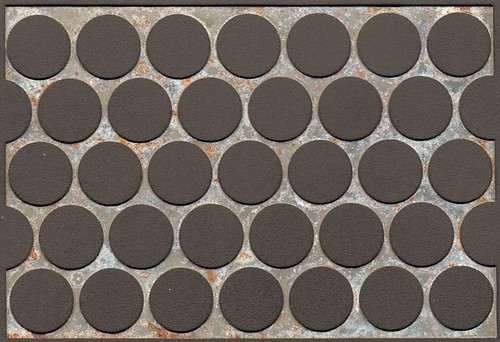
With respect to skeleton scrap, Phil Mossman has used the word “fillet,” which Wikipedia defines as “a rounding of an interior or exterior corner of a part design,” while an 18th U.S. Mint document used the word “clippings” (see Money of the American Colonies, p. 223). The British Mint was apparently more sophisticated on these matters, and used the word “scissel” in a 1773 document related to the coinage for colonial Virginia (cited in Eric Newman’s Coinage for Colonial Virginia, 1956, p. 54). Another word found is “honeycomb,” which was used by Robert Kriz in correspondence with Eric Newman (9/25/1978) discussing U.S. manufacture of Philippine coins. The last is apparently a unique usage and probably particular to this specific writer.
Finally, Frey’s dictionary (published in the American Journal of Numismatics, first series, vol. 50, 1916) notes alternate spellings of “sizel” and “sisel,” and reports that “syssel” was used in an English Mint document, c. 1572.
Link to the NNP Dictionary, including Frey’s dictionary and the Johnson Encyclopedia of Coin and Medal Technology:
https://nnp.wustl.edu/library/dictionary
Link to Phil Mossman’s Money of the American Colonies on NNP:
https://nnp.wustl.edu/library/book/530808
Link to Eric Newman’s Coinage for Colonial Virginia on NNP:
https://nnp.wustl.edu/library/book/514312?page=487
Link to Newman/Kriz correspondence on NNP:
https://nnp.wustl.edu/library/archivedetail/517162
This video, which conveniently pairs with the subject, was just posted on the Ron Landis Facebook page.
Ron posted a series of videos on the coin-making process. This one shows blank planchets being cut from a strip of metal, leaving behind skeleton scrap. -Editor
To watch the video, see:
https://www.facebook.com/ron.landis1/videos/
10214634481405460/
To read the earlier E-Sylum articles, see:
NUMISMATIC NUGGETS: NOVEMBER 24, 2019 : 1943 Steel Cent Planchet Strip
(https://www.coinbooks.org/v22/esylum_v22n47a16.html)
1943 STEEL CENT PLANCHET STRIPS USED IN ROOFING (https://www.coinbooks.org/v22/esylum_v22n48a08.html)
NOTES FROM E-SYLUM READERS: DECEMBER 8, 2019 : More on the Steel Cent Webbing
(https://www.coinbooks.org/v22/esylum_v22n49a10.html)
VIDEO: ELLSWORTH SHARES VISION FOR FUTURE
These are selections from the David Lisot Video Library that feature news and personalities from the world of coin collecting. David has been attending coin conventions since
1972 and began videotaping in 1985. The Newman Numismatic Portal now lists all David’s videos on their website at:
https://nnp.wustl.edu/library/multimediadetail/522852
Here's one with new ANA President Steve Ellsworth sharing his vision of the numismatic future. -Editor
 Ellsworth Shares Vision for Future
Ellsworth Shares Vision for Future
Col. Steven Ellsworth, Ret., President American Numismatic Association, David Lisot, Interviewer, CoinTelevision.com.
Steve Ellsworth is the new president of the ANA. Hear his specific ideas how to promote coin collecting and strengthen the American Numismatic Association.
An excerpt of the video is available for viewing on the Coin Television YouTube Channel at:
https://youtu.be/63X3jHn0P2M

NOTES FROM E-SYLUM READERS: DECEMBER 15, 2019
The Paper Crown of of Holy Roman Emperor Charles V
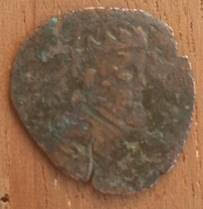

David Pickup writes:
I bought this very worn copper coin. The ruler I think is Holy Roman Emperor Charles V. he seems to be wearing a Christmas paper crown.
Cool. Thanks. -Editor
Roller Marks on U.S. Banknotes
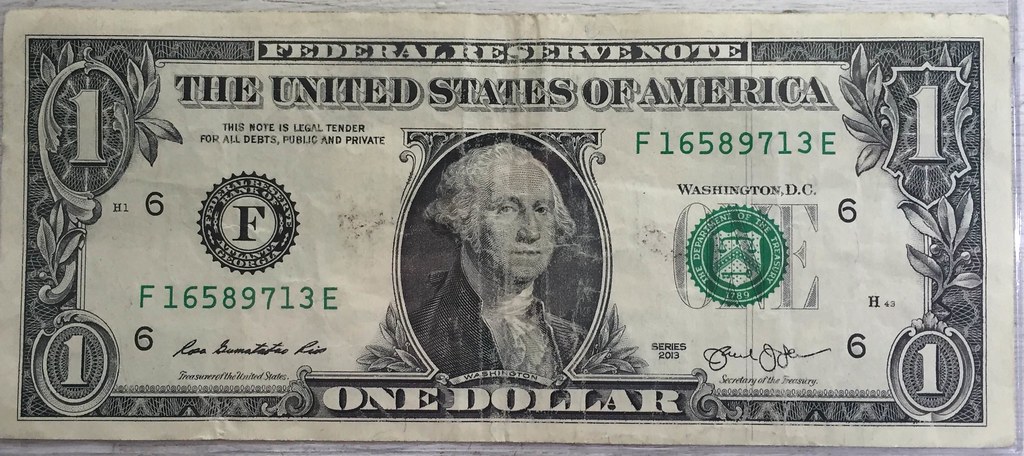
Drage Vukcevich writes:
 Remember that possible $1 Federal Reserve Note I asked about, that had that possible light security thread appearing to come down vertically, on the right side? Turns
out it was a merely a mark from a roller, when the BEP shoots those 32-note sheets through the machines at near lightning speed.
Remember that possible $1 Federal Reserve Note I asked about, that had that possible light security thread appearing to come down vertically, on the right side? Turns
out it was a merely a mark from a roller, when the BEP shoots those 32-note sheets through the machines at near lightning speed.
I had taken it to a couple of older currency dealers at the recent Baltimore-Whitman show. They recognized it right away.
Thanks for the update! Makes sense. I haven't noticed any of these in the wild, but I'll be on the lookout. -Editor

To read the earlier E-Sylum article, see:
NOTES FROM E-SYLUM READERS: JULY 28, 2019 : Vertical Lines on U.S. Dollar Bill
(https://www.coinbooks.org/v22/esylum_v22n30a15.html)

MORE ON THE "SIGN OF THE 8"
Julia Casey submitted these notes on the enigmatic "Sign of the 8" we've been discussing. Thanks! -Editor


Wilmington, Ohio Preston Civil War token and Wickersham ad
Regarding the “Sign of the 8” token - I researched the advertisement provided by James Higby and it should be noted that the Wickersham store was also located in Wilmington, Ohio. The advertisements for the Robert and Robert M. Wickersham establishment start appearing in the Wilmington Clinton Republican in 1863.
I could not find an advertisement for William Preston at the “Sign of the 8” however the website Newspaperarchive.com has scanned the back issues of the Republican. I do not have a subscription to this archive but they provide a rough transcription of the newspaper contents. The July 31, 1863 edition contains the following:
"The undersigned having purchased the large and well selected stock of FANCY AND STAPLE DRY GOODS, BOOTS AND SHOES, HATS AND CAPS formerly owned by William Preston would respectfully inform the public that they will continue the business in all its various branches at the old stand on South Street. SIGN OF THE 8. Small Profits, Quick Returns, and Cash Invariably is the motto at the Sign of the 8. R. M WICKERSHAM. Wilmington, Ohio, July 17th, 1863."
So this would help to date the Preston token to having been minted before July, 1863. I tried to locate this business on South Street in Wilmington, Ohio but was not able to find a directory that covered the needed years. The use of “Sign of” to mark a business enterprise has been in place for many years before the Civil War era. For instance in his new article in the December edition of the Journal of Early American Numismatics Gary Trudgen notes that Gerardus Duyckinck’s Universal Store was located at the “Sign of the Looking Glass and Druggist Pot” in New York City. The “8” may have been a street number and/or the building likely had a large “8” sign in front that was distinctive and known to all in the community.
Harold Levi writes from the North Georgia Mountains:
I noticed the Sign of the 8 in a previous issue, but did not say anything. I see it again in this issue. The Sign of the 8 was used in the Kevin Costner movie The Postman as the sign or symbol for a renegade military group. Why was this used in the movie and where did someone get the idea? I never gave this any thought until this token appeared.
Interesting - I'd never heard of that connection. Or seen the movie. I haven't found any online references, but maybe I haven't looked hard enough. Anyone? -Editor
To read the earlier E-Sylum articles, see:
NUMISMATIC NUGGETS: DECEMBER 1, 2019 : "Sign Of The 8" Civil War Token
(https://www.coinbooks.org/v22/esylum_v22n48a19.html)
NOTES FROM E-SYLUM READERS: DECEMBER 8, 2019 : Query: The Sign of the 8
(https://www.coinbooks.org/v22/esylum_v22n49a10.html)

MORE ON BANKNOTE CATALOG WEB SITES
David Barrette of Douggin World Coins writes:
I read the article on a Bank Note site for everyone. Good idea. Don't know if you are familiar with this site http://www.banknote.ws/ but it has quite a number of world entries and has never let me down when I'm trying to find out where a banknote came from and its Pick Number.
I don't believe we've discussed this site before. In October Aidan Work of Wellington, New Zealand proposed "a banknote catalog & gallery website" modeled after the coin catalog website at http://en.numista.com . Another reader suggested https://colnect.com/en/banknotes as a starting point.
The Bank Note Museum is an active site, with new additions as recently as this week. It features a long list of contributors from around the world, but the source of individual images is not noted. Only the Pick number, denomination, issuer, date and printer are described.
I reached out to readers who had commented on Aidan's proposal. -Editor
Kavan Ratnatunga of Sri Lanka writes:
I checked the Ceylon 19th century issues on that site. Very curious that it has the same serial numbers for 1850-1856 1, 2, 5 pound issues as the Colnet site as well as same the very limited 12 images for the Private Banknotes when I list 97 types with images in my website notes.lakdiva.org/main.html. I'm not sure which way the images went: banknote.ws registered in 2006 and colnect.com in 2007.
I have never understood why these private banknotes were listed by Krause as specialised issues and ignored in The Banknote Book as they were the only currency used in Ceylon from 1856 to 1884. Very similar issues are listed for Hong Kong as General Issues. A comprehensive world catalogue of paper money is not an easy task and needs specialized interest and knowledge of each country.
It's also possible that the same contributor uploaded the images to each site.
Any comprehensive catalog, even a commercially-produced one, requires a great deal of input from specialist collectors and researchers. Since the invention of language (and later, the printing press and internet) people have learned from and built upon the work of others to increase and diffuse knowledge in every domain. Collectors are a hive of bees - specialists discover information, generalists compile and classify it, and our collective knowledge continually increases.
Coincidentally, the publisher of The Banknote Book has just rolled out a nice update of his BanknoteNews.com site. -Editor
In a December 13, 2019 email, Owen Linzmayer writes:
"The site has been completely revamped with a clean, modern design, and robust foundation that provides many improvements. Visitors are now able to comment on posts, search for posts dating back over a decade, and share items via Twitter and Facebook. The categories group related posts by interests such as Commemorative, New Note, New Variety, Polymer, Industry, Auction, etc. Check it out today, and let us know if you have ideas for additional improvements."
Aidan Work writes:
What I am proposing is an open project that is peer reviewed by fellow numismatists. In other words, numismatists being invited to contribute. Nutista should be an online banknote, coin, community currency, & postal order catalog & gallery website.
I am very familiar with http://www.banknote.ws ,but there is still room for improvement as far as including catalog listings from other catalogs as cross-references goes.
Far too many errors remain in both the Krause & Pick catalogues. I admire Owen Linzmayer for his hard work in rectifying some problems regarding some of the banknote listings.
I would be more than happy to contribute to Nutista - especially in the areas of banknotes,coins, & postal orders from British Empire & British Commonwealth countries.
Nutista should also have education as its aim as well.
Instead of grading & pricing, it would be serial number prefixes being listed ('AA','AB','AC',etc.).
Of course, Replacement notes, Specimen notes, & pattern coins would be listed separately.
This is where numismatic museums & numismatic societies can come in handy from the contribution perspective.
To visit the Bank Note Museum, see:
http://www.banknote.ws/
To visit the BanknoteNews.com, see:
https://banknotenews.com/
To read the earlier E-Sylum articles, see:
BANKNOTE CATALOG WEB SITE PROPOSED (https://www.coinbooks.org/v22/esylum_v22n41a13.html)
NOTES FROM E-SYLUM READERS: OCTOBER 20, 2019 : The Colnect Banknote Catalog
(https://www.coinbooks.org/v22/esylum_v22n42a12.html)

VOCABULARY: GUILLOCHE, HALF-AND-HALF MEDAL
Dick Johnson submitted these entries from his Encyclopedia of Coin and Medal Terminology. Thanks. I added images and links. -Editor
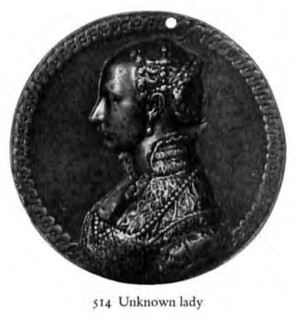 Guilloche Border. A kind of ornament border formed of two or more strands twisted over each other in series, leaving circular openings
which are filled with dots. A medal of an Unknown Lady in the Samuel H. Kress collection (514) has such a border. See border.
Guilloche Border. A kind of ornament border formed of two or more strands twisted over each other in series, leaving circular openings
which are filled with dots. A medal of an Unknown Lady in the Samuel H. Kress collection (514) has such a border. See border.
For more information on the Kres collection, see:
COMPLETE CATALOGUE OF THE SAMUEL H· KRESS COLLECTION RENAISSANCE MEDALS BY G· F·
HILL AND G· POLLARD (http://www.kressfoundation.org/uploadedFiles/
sacKress_Collection/Renaissance%20Medals.pdf)
Half-and-Half Medal. 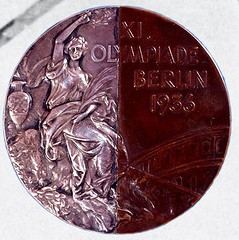 Two award medals physically cut in half and one of each half soldered back together; they are awarded to the two contestants who tied in the contest for which the awards
were made. Such half-and-half medals are particularly dramatic because the medals are of differing colors, as gold and silver, or silver and bronze. They have been observed only
for sports awards, and then only rarely.
Two award medals physically cut in half and one of each half soldered back together; they are awarded to the two contestants who tied in the contest for which the awards
were made. Such half-and-half medals are particularly dramatic because the medals are of differing colors, as gold and silver, or silver and bronze. They have been observed only
for sports awards, and then only rarely.
Wow - I'd never heard of such a medal. But they do exist. I found a YouTube video about Japanese pole vaulters Shuhei Nishida and Sueo Oe who tied for second place at the Berlin 1936 Olympics. -Editor
To watch the complete video, see:
The Half-Silver and Half-Bronze Olympic Medals (https://www.youtube.com/watch?v=RE2LqC73KsQ)
Looking for the meaning of a numismatic word, or the description of a term? Try the Newman Numismatic Portal's Numismatic Dictionary at: https://nnp.wustl.edu/library/dictionary
Or if you would like a printed copy of the complete Encyclopedia, it is available. There are 1,854 terms, on 678 pages, in The Encyclopedia of Coin and Medal Technology. Even running two a week would require more than 19 years to publish them all. If you would like an advance draft of this vital reference work it may be obtained from the author for your check of $50 sent postpaid. Dick Johnson, 139 Thompson Drive, Torrington, CT 06790.
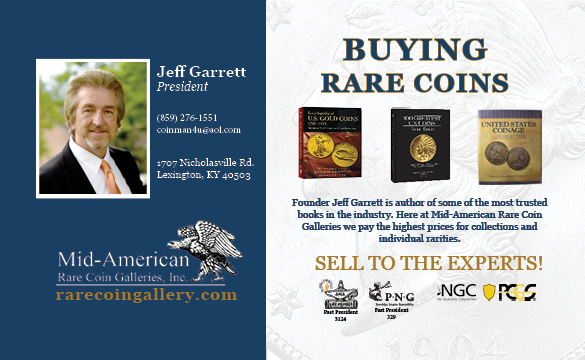
EMMANUEL JOSEPH ATTINELLI JR., (1832-1895)
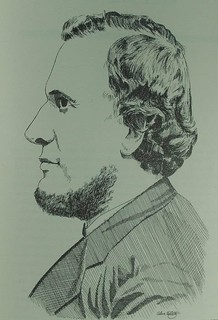 Attinelli, Emmanuel Joseph Jr., (1832-1895), his known addresses are as follows : in 1834: 27 Stone Street, New York; in 1865: 107 East 49th Street, New York; in
1880, 118 Rail Road Avenue, New York City, New York; from 1886 to 1890, Residence : 137 Centre St., and Doctor's Home Office : 1636 Rail Road Avenue, New York City, New York;
in 1893, 1636 Vanderbilt Avenue, East, New York; in 1894, Landis Avenue, Vineland, New Jersey.
Attinelli, Emmanuel Joseph Jr., (1832-1895), his known addresses are as follows : in 1834: 27 Stone Street, New York; in 1865: 107 East 49th Street, New York; in
1880, 118 Rail Road Avenue, New York City, New York; from 1886 to 1890, Residence : 137 Centre St., and Doctor's Home Office : 1636 Rail Road Avenue, New York City, New York;
in 1893, 1636 Vanderbilt Avenue, East, New York; in 1894, Landis Avenue, Vineland, New Jersey.
He was born on April 16, 1832, in New York City, New York, the son of an immigrant Italian nobleman Dot. Emanuel Giuseppe Attinelli, Sr. (January 5, 1803- June 24, 1854), and his mother an American blueblood and native of the state of New Hampshire, Mehitable Kent (November 1, 1796 –July 16,1849).
His father, Signor Dottore Emanuel Giuseppe Attinelli, was an illustrious Italian noble who served at the court of King Ferdinand I at Palermo, Sicily. He was forced into political exile in 1821 and came to reside first at Boston and then to 27 Stone Street, New York, working as an exchange or money broker at 8 Broad Street.
Between 1840-1848/9 young Attinelli Junior was probably educated abroad as the majority of aristocrats had been, typically at Paris, France. So far no documentation has surfaced to corroborate this, but it is consistent with what we would expect to find to be the case.
By April 1849 Attinelli, Sr., was appointed the Consul in New York by the government of the Kingdom of the Two Sicilies (Regno delle Due Sicilie), the arrival back to America might also help to better explain this sequence. Evidently, the Attinelli's were a distinguished family of the Italian nobility who were highly cultivated and financially and politically connected and were well suited as part of the Italian Consulate in New York City, New York and Palermo, Italy, which must have afforded them many opportunities to travel especially between these two countries over the years.
Mehitable Kent Attinelli, the mother of our character, died three months later of the epidemic in New York in July 1849. Her death notice appeared in Spectator, Thursday, July 19, 1849. Her tragic and untimely death appears to have effected the teenager lifelong inspiring him to study microscopy and perhaps inspiring him to enter into the medical profession to fight disease. We can also see how his father's dealings with currency exchange also influenced his lifelong pursuit in numismatics with interest in American and foreign specie. His father continued to work in New York City as an exchange broker, interpreter, translator and Consul to Palermo, Sicily and established many diplomatic relations among the consuls of other governments.
Young Attinelli seems to have been involved in studying coins from his youth and like most educated men learned about ancient Greek and Roman coins through his studies of the classical languages. He also was aware of the changes in American coinage as it affected what circulated as specie. After the "gold rush" of 1849 a new craze for gold filled the American atmosphere.
After his schooling he traveled and his freedom as an independent bachelor granted the leeway to explore and develop in the same vein as his parents granted him leeway to grow and develop from his youth. At some date, perhaps, prior to his father's death young Attinelli travelled to San Andreas, Calaveras County, California, on some unknown account, and suffered the loss of $500 during the fire there in June 1858. It is not clear why young Attinelli went there, if it was concerning gold prospecting, or involving family, friends, or relatives immigrating there from Italy.
Two years later he married Lydia Beekman Moulton (d. 1900), the only daughter of Hon. Severn D. Moulton (1806-1878), Tax Commissioner of New York City, on his twenty-eighth birthday, Monday, April 16, 1860 at New York City. The fact that Attinelli married the daughter from an upper class and illustrious family confirms his own financial status as well-to-do, culturally and intellectually developed and a perfect fit to schmooze with affluent and upper crusts of society, like himself. They were married by the Rev. Charles M. Jamison. He and his wife were living in both Boston and New York City as many well to do people had done similarly, apparently with residences established by his father on his arrival to America.
From 1867-1870 he was appointed to the Board of Aldermen City of Boston, during the administration of Mayor Nathaniel Shurtleff. Married Attinelli still retained the dignity and status of the Consulate in New York since his wife was formally invited to the French Consulate, as published in Courier des Etats-Unis, Sunday, October 5, 1879. This comes as no surprise since he intimates a deep personal friendship and knowledge of Louis Borg, the French Consul in New York when he discusses his auction of medals at Henry H. Leeds & Miner, New York on November 12,1867 and the keen knowledge they had been offered on April 17, 1856 but were withdrawn as he astutely and meticulously recorded these facts in Numisgraphics.
On November 21,1863, he sold his collection of 148 lots of foreign coins, United States coins, medals and tokens and Colonial coins through Henry H. Leeds & Co., New York. He added another 4 lots of United States to another Henry H. Leeds & Co., coin auction held four days later on November 25, 1863. And yet another of 117 lots of foreign and United States coins and medals sold by H. H. Leeds & Co., NY on December 24, 1863.
He sold his collection of 384 lots through Bangs, Merwin & Co., NY on December 21, 1864, postponed since December 16.
He also sold coins to Charles Wild.
In March 1869 he purchased Lord Baltimore coinage paying $21 for several pieces.
It is popularly published that Dr. Emmanuel Joseph Attinelli (1832-1895), undertook the task of enumerating every known American coin auction sale to the end of 1875 in his publication of Numisgraphics, or A List of Catalogues, in which Occur Coins or Medals, which have been Sold by Auction in the United States . . . (New York, 1876) [Clain-Stefanelli 11863, Sigler 141] .
What is not popularly known is that technically, Numisgraphics is a co-authored work by Attinelli and Parish in light of the fact that Daniel Parish, Jr. provided the bulk of the entries from pages 5-44. The title page reads “Compiled by E. J. Attinelli” with no reference to Parish or mention of being assisted by him or the fact that more than half the auction catalogues listed in his work are based on Parish’s work previously published a decade earlier in a series of three articles in The American Journal of Numismatics. Certainly, Attinelli was not a plagiarist since there is evidence to support the notion that Parish wished to remain anonymous since Attinelli in the Preface references an anonymous person and Parish is the only person living at that time and within the circle of Attinelli's friends who fits the bill.
Regardless, he published the book on the occasion of the 1776-1876 Centennial celebrated throughout the United States. The book is an anthology of over 400 listings of coin auction catalogs printed in the United States presented chronologically from 1828 to 1875, with brief notations about the consignor, number of lots, days of the auctions, prices realized, and occasionally personal notes and observations, followed by an index to owners and coin dealers.
An appendix contains bibliographic information on books, periodicals, fixed price lists, and institutional collections. Attinelli worked to create a comprehensive and exhaustive list of coin auction sales catalogs and numismatic literature but we know he missed many coin auction catalogs and other numismatic literature as well. He availed himself to reading the ANS organ the American Journal of Numismatics which contained a list published ten years before his own by Daniel Parish, Jr, but did not include four of them.
Nevertheless, if he had not published Numisgraphics he would only have been an insignificant footnote in the annals of American numismatic history. Though imperfect and far from complete Attinelli's work still remains a vitally important and basic work that should be in every American numismatists library as an essential reference tool.
To read the complete article, see:
ATTINELLI, DR. EMMANUEL JOSEPH
(https://sites.google.com/a/numismaticmall.com/www/numismaticmall-com/attinelli-dr-emmanuel-joseph)
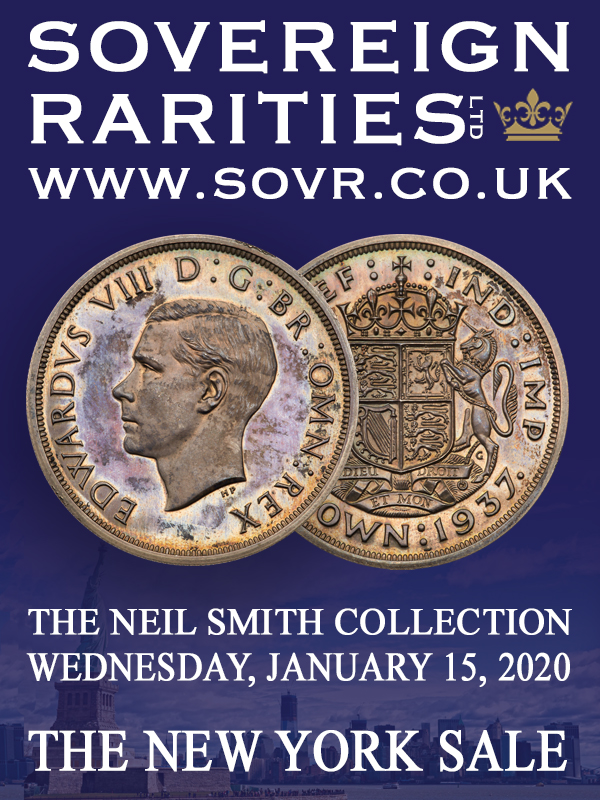
NATHANIEL HAWTHORNE: GRANDFATHER’S CHAIR
In his December 12, 2019 Stack's Bowers blog, Dave Bowers writes: "For this week’s blog I reprint one of the most enduring stories relating to early American numismatics—an often-quoted favorite ever since it first was published nearly 200 years ago." -Editor
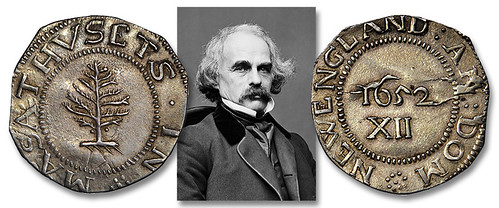
by Nathaniel Hawthorne
Grandfather told them a story about Captain John Hull and the Pine Tree shillings. Captain John Hull was the mint-master of Massachusetts, and coined all the money that was made there. This was a new line of business; for, in the earlier days of the colony, the current coinage consisted of gold and silver money of England, Portugal, and Spain. These coins being scarce, the people were often forced to barter their commodities instead of selling them.
For instance, if a man wanted to buy a coat, he perhaps exchanged a bear-skin for it. If he wished for a barrel of molasses, he might purchase it with a pile of pine boards. Musket-bullets were used instead of farthings. The Indians had a sort of money, called wampum, which was made of clam-shells; and this strange sort of specie was likewise taken in payment of debts by the English settlers. Bank-bills had never been heard of. There was not money enough of any kind, in many parts of the country, to pay the salaries of the ministers; so that they sometimes had to take quintals of fish, bushels of corn, or cords of wood, instead of silver or gold.
As the people grew more numerous, and their trade one with another increased, the want of current money was still more sensibly felt. To supply the demand, the General Court passed a law for establishing a coinage of shillings, sixpences, and threepences. Captain John Hull was appointed to manufacture this money, and was to have about one shilling out of every twenty to pay him for the trouble of making them.
Hereupon all the old silver in the colony was handed over to Captain John Hull. The battered silver cans and tankards, I suppose, and silver buckles, and broken spoons, and silver buttons of worn-out coats, and silver hilts of swords that had figured at court, — all such curious old articles were doubtless thrown into the melting-pot together. But by far the greater part of the silver consisted of bullion from the mines of South America, which the English buccaneers—who were little better than pirates —had taken from the Spaniards, and brought to Massachusetts.
All this old and new silver being melted down and coined, the result was an immense amount of splendid shillings, sixpences, and threepences. Each had the date, 1652, on the one side, and the figure of a pine tree on the other. Hence they were called pine-tree shillings. And for every twenty shillings that he coined, you will remember, Captain John Hull was entitled to put one shilling into his own pocket.
The magistrates soon began to suspect that the mintmaster would have the best of the bargain. They offered him a large sum of money if he would but give up that twentieth shilling which he was continually dropping into his own pocket. But Captain Hull declared himself perfectly satisfied with the shilling. And well he might be; for so diligently did he labor, that, in a few years, his pockets, his money-bags, and his strong box were overflowing with pine-tree shillings. This was probably the case when he came into possession of grandfather’s chair; and, as he had worked so hard at the mint, it was certainly proper that he should have a comfortable chair to rest himself in.
When the mint-master had grown very rich, a young man, Samuel Sewell by name, came a-courting to his only daughter. His daughter— whose name I do not know, but we will call her Betsey — was a fine, hearty damsel, by no means so slender as some young ladies of our own days. On the contrary, having always fed heartily on pumpkin-pies, doughnuts, Indian puddings, and other Puritan dainties, she was as round and plump as a pudding herself. With this round, rosy Miss Betsey did Samuel Sewell fall in love. As he was a young man of good character, industrious in his business, and a member of the church, the mint-master very readily gave his consent.
“Yes, you may take her,” said he, in his rough way, “and you’ll find her a heavy burden enough!”
On the wedding day, we may suppose that honest John Hull dressed himself in a plum-colored coat, all the buttons of which were made of pine-tree shillings. The buttons of his waistcoat were sixpences; and the knees of his small-clothes were buttoned with silver threepences. Thus attired, he sat with great dignity in grandfather’s chair; and, being a portly old gentleman, he completely filled it from elbow to elbow. On the opposite side of the room, between her bridesmaids, sat Miss Betsey. She was blushing with all her might, and looked like a full-blown peony, or a great red apple.
There, too, was the bridegroom, dressed in a fine purple coat and gold-lace waistcoat, with as much other finery as the Puritan laws and customs would allow him to put on. His hair was cropped close to his head, because Governor Endicott had forbidden any man to wear it below the ears. But he was a very personable young man, and so thought the bridesmaids and Miss Betsey herself. The mint-master also was pleased with his new son-in-law, especially as he had courted Miss Betsey out of pure love and had said nothing at all about her portion. So, when the marriage ceremony was over, Captain Hull whispered a word to two of his men-servants, who immediately went out, and soon returned, lugging in a large pair of scales. They were such a. pair as wholesale merchants use for weighing bulky commodities; and quite a bulky commodity was now to be weighed in them.
“Daughter Betsey,” said the mint-master, “get into one side of these scales.”
Miss Betsey — or Mrs. Sewell, as we must now call her— did as she was bid, like a dutiful child, without any question of the why and wherefore. But what her father could mean, unless to make her husband pay for her by the pound (in which case she would have been a dear bargain), she had not the least idea.
“And now,” said honest John Hull to the servants, “bring that box hither.”
The box to which the mint-master pointed was a huge, square, iron-bound, oaken chest; it was big enough, my children, for all four of you to play at hide-and-seek in. The servants tugged with might and main, but could not lift this enormous receptacle, and were finally obliged to drag it across the floor. Captain Hull then took a key from his girdle, unlocked the chest, and lifted its ponderous lid. Behold! it was full to the brim of bright pine-tree shillings, fresh from the mint; and Samuel Sewell began to think that his father-in-law had got possession of all the money in the Massachusetts treasury. But it was only the mint-master’s honest share of the coinage.
Then the servants, at Captain Hull’s command, heaped double handfuls of shillings into one side of the scales, while Betsey remained in the other. Jingle, jingle, went the shillings, as handful after handful was thrown in, till, plump and ponderous as she was, they fairly weighed the young lady from the floor.
“There, son Sewell!” cried the honest mint-master, resuming his seat in grandfather’s chair, “take these shillings for my daughter’s portion. Use her kindly, and thank Heaven for her. It is not every wife that’s worth her weight in silver!”
The children laughed heartily at this legend, and would hardly be convinced but that grandfather had made it out of his own head. He assured them faithfully, however, that he had found it in the pages of a grave historian, and had merely tried to tell it in a somewhat funnier style. As for Samuel Sewell, he afterwards became chief justice of Massachusetts.
To read the complete article, see:
A Twice-Told Tale
(https://www.stacksbowers.com/News/Pages/Blogs.aspx?ArticleID=q-david-bowers-hawthorne)
THE BOOK BAZARRE
DOUG WINTER ON TROPHY GOLD COINS
Earlier this month Doug Winter penned an article about "Trophy" gold coins. Here are some of my favorites. -Editor
I define a “Trophy Coin” as one which suitably combines rarity, appearance, and a great story in one neat package. Trophy coins aren’t necessarily the rarest pieces within a specific series. As an example, a 1907 High Relief is far from the rarest issue in the St. Gaudens series, yet for most collectors it is a Trophy Coin while a great rarity like a 1921 Saint in MS63 (and above) is considered more of a specialist’s issue. Trophy coins, because of their strong multiple levels of demand, tend to be fully valued in regards to other coins. You’ll never read an article by me espousing how an MS64 High Relief is undervalued. But I know that a nice MS64 High Relief on my website will sell more quickly than many rarer issues which don’t have Trophy Coin status.
This article deals with gold Trophy Coins. By their very nature, trophy coins are expensive and this article will seem elitist, but if your coin budget is a few thousand dollars per issue, you just aren’t going to be a player in the Trophy coin market.
In addition to a brief discussion about each trophy coin, I’m going to include the “pitch” which makes these coins so unique and which gives them multiple levels of demand.
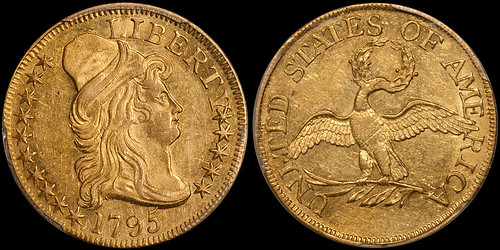
1795 Small Eagle Half Eagle
The Pitch: First year of issue, and along with the similarly dated eagle, the first American gold coin.
I think that there would be very little argument with placing the 1795 half eagle on any Trophy Coin list. Who wouldn’t want to own a good-looking example of this historic issue? And the beauty of the 1795 Small Eagle half eagle is that it is available enough in better-than-average grades and it isn’t wildly expensive.
The level of demand for this coin has always been strong but I have noted an even greater demand in the past decade. Type collectors have always wanted a nice 1795 half eagle but now there is competition from other collectors as well. I wouldn’t necessarily regard just any 1795 small eagle as a Trophy Coin (even a nice EF, while something that I would personally be thrilled to buy for inventory, isn’t a true trophy). A higher grade example (in this case MS63 or above) with original color and choice surfaces would be a great addition to any Trophy Coin set.
I expect a coin like a 1795 half eagle to show excellent price appreciation in the coming years. These are the Old Masters of American coins, if you will, and while they are not as faddish as more modern issues, they have the core fundamentals which any issue needs for future appreciation.
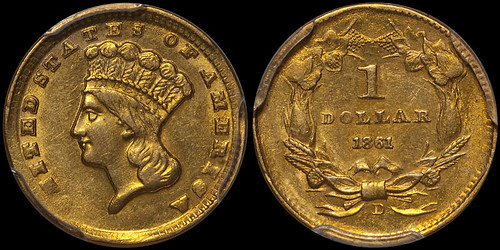
1861-D Gold Dollar
The Pitch: The only gold coin which can be positively attributed to Confederate manufacture. A coin which every Southerner should own!
The 1861-D is clearly the most desirable gold dollar and a strong case can be made for calling it the single most coveted issue from any southern branch mint. It has many things going for it: genuine rarity (fewer than 100 are known from a mintage estimated to be in the 750-1000 range), unique appearance, compelling backstory (struck by the Confederate forces after the mint had been seized from the Union forces), and multiple levels of collector demand.
The 1861-D dollar has become extremely popular in recent years and it now trades in the $40,000-50,000+ range for a decent example. I still like the growth potential for this issue, and it is possibly the best “investment” of any coin on this list due to its unusual co-status as collector coin and trophy coin.
I didn't think to seek out one of these for my U.S. Civil War numismatics collection, but it would have been a great addition. These have gotten pricey. What would the mint workers think of their handiwork today? -Editor
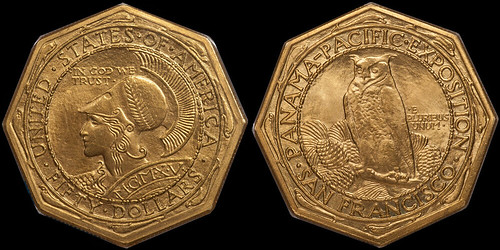
1915-S Panama-Pacific Octagonal $50.00
The Pitch: The biggest coin, size-wise, to be struck at the U.S. mint. Big, beautiful and, in the case of the octagonal design, highly unusual appearance.
The Pitch: The biggest coin, size-wise, to be struck at the U.S. mint. Big, beautiful and, in the case of the octagonal design, showing a highly unusual appearance.
If you sit and think about it, the Pan-Pac Octagonal is a gimmick coin. It's huge, it's eight-sided, and even by 1915 standards, and its mintage of 645 is presumptuous at best. That said, it is the Mac Daddy of all Trophy Coins, and it is a coin that every rich collector or investor can’t resist.
Even someone like me, who doesn’t care for gold commemoratives, loves the Pan-Pac Octagonal. I realize that the Round $50 is considerably scarcer, especially in Gem, but the Octagonal is so, well, odd. I love the massiveness of this coin and the way that even encased in a PCGS holder, it feels like a little brick of gold. I love the Robert Aitken design. And, of course, I love that crazy, crazy shape.
To read the complete article, see:
Ten Trophy Gold Coins and Their Pitches
(https://raregoldcoins.com/blog/articles/ten-trophy-gold-coins-and-their-pitches)

MR. LIMA'S 1927-D DOUBLE EAGLE
David Stone of Heritage Auctions published an article in the Winter 2019-2020 issue of the firm's Intelligent Collector magazine about the "Lima" 1927-D double eagle. With permission, we're republishing it here. Thanks. -Editor


The 1927-D Saint-Gaudens double eagle is a landmark rarity in the series, the rarest collectible United States gold coin of the 20th century. Only 13 examples have been reliably reported over the years and four of those coins are forever sequestered in institutional collections at the Smithsonian Institution and the Connecticut State Library. Another two specimens appeared in auctions long ago, but have not been seen in more than 45 years, leaving only seven 1927-D double eagles available to present-day collectors. Heritage Auctions is pleased to offer one of the most famous examples of this sought-after rarity in our January 2020 FUN Signature Auction.
The coin in the Heritage auction is from the Fox Collection, currently the second ranked Saint-Gaudens $20 Gold With Major Varieties, Circulation Strikes (1907-1933) PCGS Registry Set. In earlier times, this MS65+ PCGS, CAC example was a highlight of some equally fine numismatic gatherings, including the magnificent set of Saint-Gaudens double eagles compiled by legendary collector Dr. Steven Duckor. We can trace the history of this coin back to the 1940s, a time when the coin was less than 20 years old, but one of the earliest owners of this celebrated coin has remained a baffling mystery to curious collectors, until now.
The enigmatic “Mr. Lima” purchased this coin from prominent Dayton, Ohio coin dealer James Kelly for $2,000 in a private transaction in 1947. Called “Mr. Lima” because of his Ohio hometown, he chose to keep his collecting activities under the radar, buying from dealers like Kelly, Stack’s, and B. Max Mehl in private transactions throughout the 1940s and ‘50s. He never attended auctions or joined numismatic organizations, so he remained largely unknown to the numismatic community of those times, outside of his few dealer contacts. He quietly assembled remarkable collections of the four U.S. gold denominations issued in the 20th century, as he was born in 1899 and wanted to acquire an example of each gold coin issued during his lifetime. He retained his ultra-rare 1927-D double eagle for almost 40 years, before consigning it to the Paramount segment of Auction ’84.
Jim Kelly, who sold the coin to “Mr. Lima” in 1947, was one of the founders of the Paramount International Coin Corporation. Kelly died in 1968, but his history with “Mr. Lima”, and the firm’s convenient Ohio location, may have influenced his decision to sell the coin through them. When the auction was held in Dearborn, Michigan on July 25, 1984, “Mr. Lima” attended his first coin auction to see his celebrated 1927-D cross the auction block. The coin realized $198,000, bettering the price brought by the famous Eliasberg specimen, sold two years before, by $22,000. “Mr. Lima” congratulated the new owner, Dr. Steven Duckor, on his purchase, and sent him a letter detailing the history of the coin up to that time a few months later.
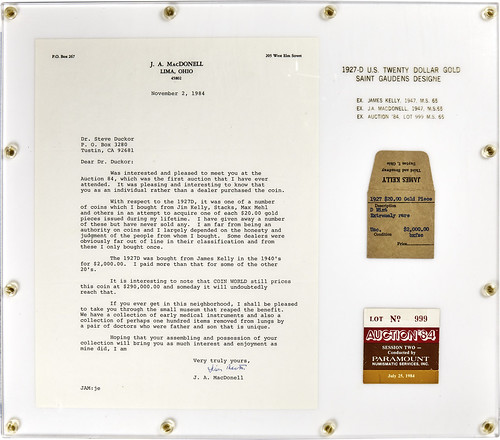
Dr. Duckor, who remains active in the numismatic community today, was a consummate collector who valued his coins for their beauty and historical importance, as well as their value. He carefully preserved the letter from “Mr. Lima”, along with the original flip from Jim Kelly and the flip from Auction ’84, and arranged them in a custom 15x13 inch Capital Plastics frame to ensure the early history of the coin was not lost. Although the information in the frame has never been published, it has followed the coin from one owner to the next, down to the present day.
Dr. Duckor retained the main body of his double eagle collection until he sold it through Heritage in a blockbuster auction in January 2012. However, unbeknownst to the numismatic community at large, he consigned his 1927-D double eagle to David Akers’ sale of the Thaine B. Price Collection in May 1998. Akers, who had also been a principal of the Paramount firm, and knew the history of the coin, gave the anonymous early owner his famous “Mr. Lima” sobriquet in his lot description for the Price catalog, but declined to identify him by name, even though he had been deceased for seven years by then. Students of the series have puzzled over his identity ever since.
“Mr. Lima’s” 1927-D has been offered publicly a few more times in the intervening years, including its appearance in the January 2014 FUN Signature Auction, where it realized a record price of $1,997,500. Thankfully, the present consignor, Mr. Rollo Fox, preserved the important frame with the historical information, making it possible for us to finally reveal the identity of “Mr. Lima”.
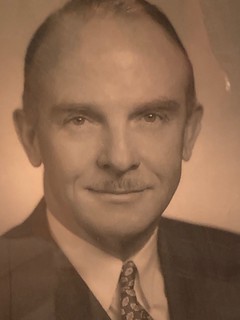 As revealed in his letter to Dr. Duckor, “Mr. Lima” was actually James (Jim) Alfred MacDonell. A diligent search of internet records reveals he was a prominent citizen
of Lima, a philanthropist, humanitarian, and oil company executive who served as the president of the Allen County Historical Society from 1938 through 1989. Among his many
charities, he bequeathed his family home to the Allen County Museum and gave a tree to every first grader in the Lima and area public schools, to be used by the Lima Planning
Commission to beautify the town. The proceeds of the sale of his 1927-D double eagle were donated to the Allen County Museum, which was closely affiliated with the Historical
Society. He died on June 23, 1991 at the ripe old age of 91. Thanks to all the owners who preserved this remarkable piece of numismatic history, we can finally solve this
long-standing numismatic mystery. Be sure to look for “Mr. Lima’s” 1927-D in the upcoming FUN sale.
As revealed in his letter to Dr. Duckor, “Mr. Lima” was actually James (Jim) Alfred MacDonell. A diligent search of internet records reveals he was a prominent citizen
of Lima, a philanthropist, humanitarian, and oil company executive who served as the president of the Allen County Historical Society from 1938 through 1989. Among his many
charities, he bequeathed his family home to the Allen County Museum and gave a tree to every first grader in the Lima and area public schools, to be used by the Lima Planning
Commission to beautify the town. The proceeds of the sale of his 1927-D double eagle were donated to the Allen County Museum, which was closely affiliated with the Historical
Society. He died on June 23, 1991 at the ripe old age of 91. Thanks to all the owners who preserved this remarkable piece of numismatic history, we can finally solve this
long-standing numismatic mystery. Be sure to look for “Mr. Lima’s” 1927-D in the upcoming FUN sale.
David Stone writes:
After the article was published, Heritage Executive Vice President Todd Imhof received the following e-mail from Donald Slouffman, the Paramount numismatist who actually handled the 1927-D transaction with Mr. Lima
“Todd
"I appreciated the article on the 1927-D twenty that appeared in the "Intelligent Collector". In my later years at Paramount I was the representative who worked with Mr. Lima, Jim MacDonell. It was always interesting to go to Lima, have lunch with Mr. MacDonell, and proceed to the bank to pick up coins. For the most part you did not know what you would get as he would bring a box out for me to go through and pick what coins I wanted to take. Paramount had already moved its headquarters to the Bahamas and had an office in Florida. I remained in the Ohio office until it's closing.
"On the trip to Lima in which I received the 1927-D, I was going to pick up a 1933 Ten and several additional important coins. No mention was ever made about consigning a 1927-D Twenty! After receiving those coins Mr. MacDonell handed me the 1927-D without referencing it and asked if I thought Dave would like to have this particular coin for auction. Well, of course I said he would. When I returned to the office I called Dave in Florida to tell him the trip was successful. I then proceeded to tell him I picked up an additional coin the 1927-D. Naturally he was surprised and elated. I will never forget the words out of his mouth: Are you sure it is real? I indicated that it had all the characteristics and he would like it. The rest is history. Mr. MacDonell was a great guy and I always enjoyed my trips to Lima to meet with him. Thought you might enjoy this little story."
"Donald L. Slouffman”
David adds:
Remarkably, Mr. Lima’s nephew, George MacDonell, became aware of the auction through a friend who read the lot description online. He sent Mark Borckardt the following message and a picture of his uncle, which we had tried and failed to secure for the article.
“Mark,
"Oddly enough, a friend from Tucson sent me the coin listing for this auction yesterday, I just found this message today. If you still need one, I have many photos of Uncle Jim MacDonell. This is going to be quite an exciting auction. I remember when he sold this coin in 1984. This is quite exciting for some of us in the family. Uncle Jim was an amazing man. I grew up next door to him in Líma, Ohio, he had 3 daughters so I was like a son to him. Please let me know if I can help.
"Sincerely
"George D MacDonell”
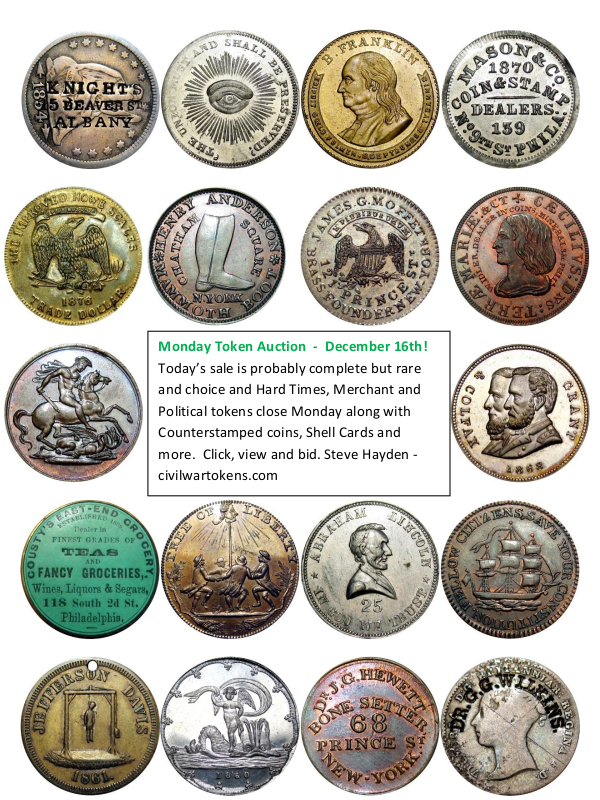
STEINBERG'S INC SEEKS COLLECTOR WANTLISTS
Steinberg's Inc became a new advertiser a few weeks ago. I came across some nice pieces on their web site this week and thought I'd use them to illustrate this letter to clients that they're running in other publications this week. -Editor
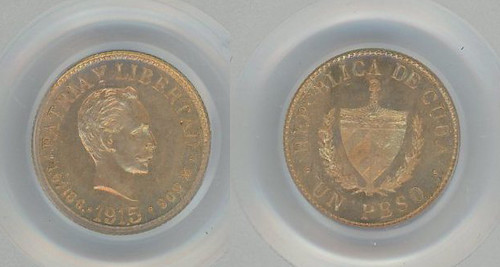
1915 Cuba Gold Peso
Dear Clients and Colleagues:
Check out all of our new purchases from the recent Whitman Baltimore coin show which are now up on our website: www.steinbergs.com
If you have a USA and/or World Gold wantlist, please send It to us and we will try and offer you "first shot" at any new purchases that match your wantlist!
We are always in the market for scarce high quality world gold - "raw" or certified graded - we are paying very competitive prices and immediate payment for material we need - we are particularly interested in the following items at the moment:
• Czechoslovakia 1-2-5-10 Ducats
• Great Britain hammered and milled gold coins -Including all 1/2-1-2-5 Guineas
• Sovereigns In the 1817-1837 period,
• All British Proof gold coins 1817-1937,
• 1989 Proof Sovereigns as well as 3 pc. and 4 pc ·"500th Anniversary'" Proof sets
• British India original and proof restrike 5 and 10 rupees as well as mohurs and double mohurs
• Spanish Treasure Fleet (1715) 1-2-4-8 Escudos - with and without dates as well as all "land" gold cobs

1923 Czechoslovakia Gold Ducat
This is just a sampling of what we are looking for for client wantlists and for our Inventory purposes - please offer us anything you think might be of interest to us.
Our firm will be represented at the upcoming FUN Orlando) and NYlNC (New York) coin shows - we won'l have bourse tables at either show but we will be walking the bourse floor looking to buy fresh material - please contact us to set up an appointment If you are going to attend either show and want to offer us material:
FUN Show in Orlando - Mike Sottini will be there Jan. 8-10, 2020 He may be reached at 919-363-5544 or email him directly at info@steinbergs.com
NYINC Show in New York City-Bob Steinberg will be there Jan. 12-18,2020 He may be reached at 802-369-6518 or email him directly at: robertstein590@comcast.net

1952 South Africa Pound
Whether you are buying or selling, please keep STEINBERG'S, INC. in mind regarding gold coins of the world!
Thanks again and best wishes for the holidays and the New Year!
Bob Steinberg and Mike Sottini
Wantlists may seem old-fashioned to some, but they're a great way to notify your favorite dealers to be on the lookout for you. Not everything goes up for sale on the internet where you'll have a chance to see and buy it. Dealers often buy groups and entire collections and your wantlist may get you the first opportunity to purchase new material. -Editor
To visit the Steinberg's Inc web site, see:
http://www.steinbergs.com/
SELECTED MEDALS FROM HEDLEY BETTS
Medal dealer Hedley Betts writes:Over the past couple of weeks I have added an eclectic assortment of over one hundred medals to the new listings on my website. Highlights include a few books, Croker's
large medal for the Union of England and Scotland; Baudichon's medal for the sinking of the Lusitania; medals by leading medallists such as Dropsy, Morlon and Turin; medals
relating to various countries including Gabon, Guadeloupe and Madagascar; and diverse topics such as beekeeping and photography. Here is a link to the new listings section of my
website:
https://www.mcssl.com/store/8596432/catalog/category/5347991
Here are some medals that caught my eye on the site. -Editor
Baudichon: THE SINKING OF THE LUSITANIA
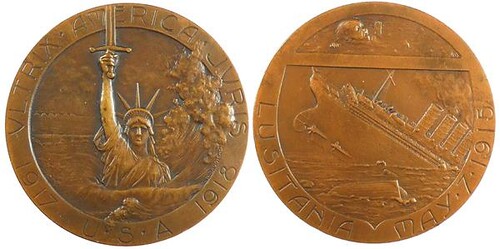
1918, France, U.S.A. SINKING OF THE LUSITANIA. By René Baudichon (1878-1963). Bronze 54mm. $425. ----------- René Baudichon (1878-1963) was a student at the École des Beaux-Art at Tours and later at the École Nationale Supérieure des Beaux Arts. He studied under Ernest Barries, François Sicard, Fréderic-Charles Victor de Vernon, and Oscar Roty.
Great medal. -Editor
To read the complete item description, see:
Baudichon: THE SINKING OF THE LUSITANIA. (https://www.mcssl.com/store/8596432/baudichon-)
BEE KEEPING AWARD. By Huguenin

Switzerland. BEE KEEPING AWARD. By Huguenin. Silvered-bronze 50mm
Unusual medal subject. -Editor
To read the complete item description, see:
Bee Keeping: BEE KEEPING AWARD by Huguenin
(https://www.mcssl.com/store/8596432/bee-keeping-bee-keeping-award-by-huguenin)
Belgium Port Extension Medal
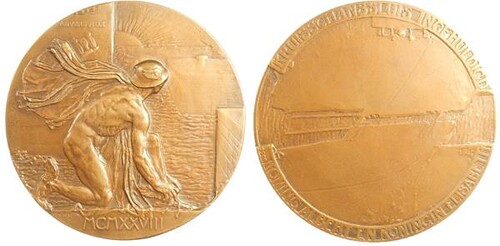
1928, Belgium. PORT EXTENSION IN ANTWERP. By Josuë Dupon. Bronze 91mm
To read the complete item description, see:
Dupon: PORT EXTENSION IN ANTWERP. By Josuë Dupon. AE 91mm
(https://www.mcssl.com/store/8596432/dupon-port-extension-in-antwerp-by-josu-dupon-ae-91mm)
Another unusual topic. I like engineering-related medals. -Editor
CHAMBRE DE METIERS DE LA SEINE Medal

France. ATHENA – CHAMBRE DE METIERS DE LA SEINE. By Samuel Grün (1869-19??). Silvered-bronze 68mm. $120. -------------------- Samuel Grün, painter, sculptor, engraver and medalist was born on February 19 1869 in Tallin, Estonia, the son of Maurice Grün, a painter. He worked in London and Paris. Grün exhibited at the Société des artistes Français and at the Salon of the Royal Academy in London. The exact date of his death is unknown, probably some time after the 1930s.
Great Art Deco piece. -Editor
To read the complete item description, see:
Grun: ATHENA – CHAMBRE DE METIERS DE LA SEINE.
(https://www.mcssl.com/store/8596432/grun-athena-chambre-de-metiers-de-la-seine-)

DIX NOONAN WEBB PREPARES FIRST INDIAN SALE
This press release describes highlights of the upcoming Dix Noonan Webb sale of Indian coins and medals. -Editor
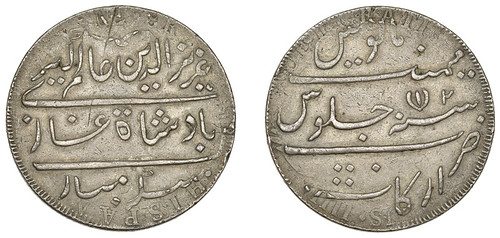
India, EIC- Madras Presidency, Arkat, Double-Rupee
Dix Noonan Webb, the international coins, medals, banknotes and jewellery specialists will be holding their first auction devoted to Indian Coins and Historical Medals. The auction will be held on Thursday, February 27, 2020 at 10am at their auction rooms in central Mayfair - 16 Bolton St, London, W1J 8BQ.
The sale will comprise four collections - Coins of the Indian Sultanates (Part II); Indian Coins from the Collection of the late John Roberts-Lewis; Indian Coins from the Collection of John Rose and Indian Historical Medals from the Collection formed by Michael Shaw as well as Indian Coins from Various Properties.
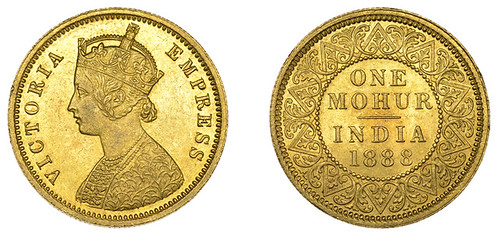
Victoria, Mohur, 1888, Calcutta
Among the highlights is, from the Collection of the late John Roberts-Lewis, a very rare and fine double-rupee from the Madras mint, dating from 1807 which has been overstruck on a Spanish-American Lima 8 Reales (coin) of Charles IV sometime between 1788 (when Charles IV’s reign began) and 1807. It is estimated to fetch £1,500-£1,800 [see image above], while an extremely fine British Indian Mohur coin, dating from 1888 and produced in Calcutta carries a similar estimate [see image].
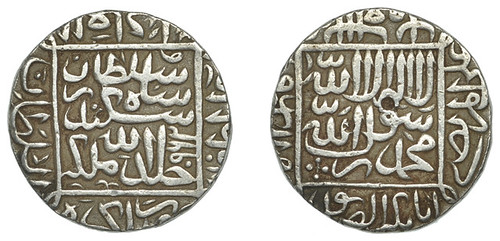
Sultans of Dehli Sikandar Shah
Part II of the Coins of the Indian Sultanates will also be included. This is the second part of the collection that Dix Noonan Webb sold in October; there will be more to come later in 2020. From the reign of Sikandar Shah, Sultan of Dehli (961-962h) a very fine and extremely rare Rupee is estimated at £2,000-£2,600 [see image], and from the Shihab al-din ‘Umar, Sultan of Dehli (715-716h), a very fine and very rare Silver Tanka carries an estimate of £1,000-£1,200.
Tim Wilkes, Specialist in Charge, Coin Department, Dix Noonan Webb, commented: “London has always been an important centre for the Indian coin market, and there have been many important sales held here over the years, but this will be the first time that DNW have had a specialist Indian sale. This follows on from our sale in October which saw three coins from the first part of Collection of Coins of the Indian Sultanates sell for more than £30,000 each.”
For more information, see:
https://www.dnw.co.uk/
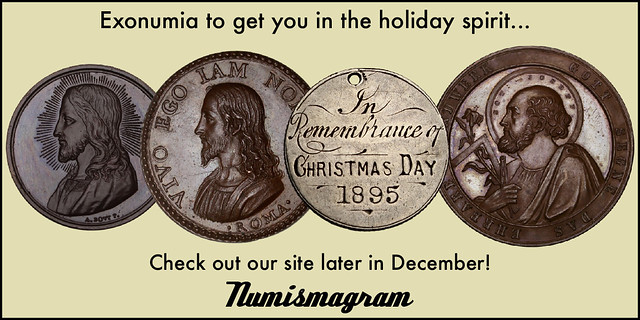
MEDALS OF THE SUN KING LOUIS XIV
I didn't manage to get this into an issue before the sale (it took place this week), but here's an article from the Künker web site on one of the lots in their December numismatic literature sale. -Editor
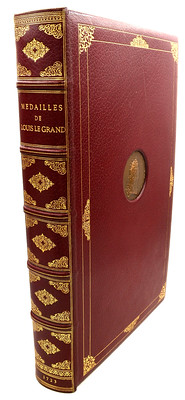 “My appreciation for you, gentlemen, can be estimated by the fact that I entrust you with what is most precious to me in the world: my glory.” This is what Sun
King Louis XIV is said to have told the members of his Petite Académie. Louis had installed the latter in 1663 for the purpose of producing his medals – in the exact manner he and
his ministers imagined them to look like. No other monarch before or after him used medals as such central elements of self-presentation: The Sun King had understood the
possibilities they offered.
“My appreciation for you, gentlemen, can be estimated by the fact that I entrust you with what is most precious to me in the world: my glory.” This is what Sun
King Louis XIV is said to have told the members of his Petite Académie. Louis had installed the latter in 1663 for the purpose of producing his medals – in the exact manner he and
his ministers imagined them to look like. No other monarch before or after him used medals as such central elements of self-presentation: The Sun King had understood the
possibilities they offered.
Especially when it came to spreading his carefully conceived “image” throughout Europe, medals were ideal means. They were given as diplomatic gifts to envoys or sent to other rulers – according to their rank and importance in bronze, silver or gold. And often they did not receive single specimens but entire series, sometimes of more than a hundred of medals. The Académie invented and minted medals on all possible “glorious” occasions, whether it be a success in one of the Sun King’s numerous wars, an episode from Louis’ personal life, a technical advance or a new building.
A single medal reports on a single event. But Louis produced not only a single one, but incredible amounts of them. Therefore, they tell the story of his reign – they are a histoire métallique.
Well, actually they rather tell how the king would have liked others to perceive history. This becomes particularly apparent when the fortunes of war favoured France’s enemies: Great defeats were omitted, and the most insignificant victories celebrated on medals. In the case of some battle defeats, the medals even corrected the battle’s result in favour of France!
In order to make the constantly increasing number of medals known all over Europe, in 1702 the Académie published “Médailles sur les principaux événements du règne entier de Louis le Grand, avec des éxplications historiques”; (=Medals on the most important events of the entire reign of Louis the Great with historical explanations). This work depicted and commented on all official medals of the king. It was an epoch-making idea with far-reaching implications. Because of this, even those who were not important enough to receive a series of hundreds of medals were able to admire the masterpieces of the propaganda of glory. And they loved doing that! Already the edition of 1702 was reprinted and translated all over Europe. In this way, the French medals – even though not in their minted form – were spread and then imitated. When it came to the self-presentation of rulers and their reign, even Louis’ enemies had no choice but to imitate him. That’s how much influence the court of Versailles had all over Europe!

The British numismatist Sir Mark Jones described the book on the entire medal history of 1723 as “an extraordinary work, unparalleled in magnificence and technical accomplishment either in contemporary Europe or in the history of the medal.” We can only agree with that!
To read the complete article, see:
A Life’s Work of Royal Glory, Immortalized on Metal and Paper
(https://www.kuenker.de/en/information/presseinformationen/aktuelle-mitteilungen/260)
To read the earlier E-Sylum article, see:
NUMISMATIC LITERATURE IN KüNKER ELIVE AUCTION 58 (https://www.coinbooks.org/v22/esylum_v22n47a03.html)

ATLANTIC CABLE MEDALS AND TOKENS
John Sallay writes:
The next time you are looking for a website to feature for the bottom of The E-Sylum, you might consider the medals and tokens page of the VERY large website that Bill Burns put together on the Atlantic cables.
We have referenced some medals from this site before, but never made it a Featured Web Site. But those articles only include one sample image to whet the reader's appetite, and I feel compelled to show more. It's a compelling collection of great medals commemorating a great feat of engineering and an even greater advancement for mankind. So here are some medals that caught my eye, and be sure to peruse the complete site for many more and all the background information on each. Great website! -Editor
1858 New York Chamber of Commerce Medal
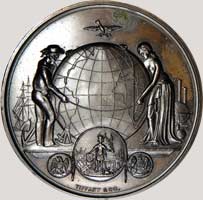
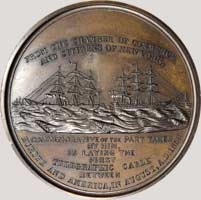
The obverse side bears a globe supported by figures of Science and Navigation. A dove hovers over the globe, bearing an olive branch in her beak. Navigation is symbolized by a background sculptured with ships, anchors and sextant; and Science has a similarly appropriate surrounding. The seal of the Chamber of Commerce, between the arms of the two countries, is to be seen below.
After the successful completion of the Atlantic cable in August 1858, by order of the Chamber of Commerce of New York, Tiffany & Company made commemorative medals in gold, each engraved with the name of one of the members of the cable expedition who had sailed on the ships of the cable fleet: Niagara, Agamemnon, Gorgon and Valorous.
Copies of the medal were also struck by Tiffany in bronze for general circulation. 58mm, 115.4gm. Two different designs of the obverse are known; one (above) is the same as the gold medal;
1858 Lovett Tokens
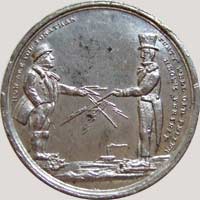
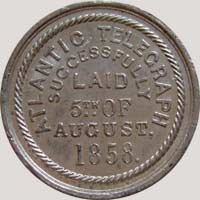
George H Lovett made a variety of these tokens in 1858, in silver, copper, brass, and white metal. The obverse shows John Bull and Brother Jonathan exchanging lightning bolts across the ocean, with a ship laying cable between them; the most commonly seen reverse has the date of the landing of the cable..
Some examples have Lovett’s “Medal Die-Sinker” advertisement on the reverse. Others have “Boy and Dog/W.H. Bridgens New York”* on the reverse, with an image of a boy riding a dog.
1858 Stokes Token
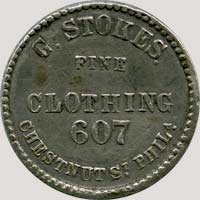
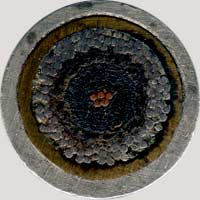
This token, issued by Granville Stokes to promote his clothing business in Philadelphia, incorporates a section of the 1858 cable, and at 6mm (¼") is much thicker than a normal token.
Very cool relic piece. -Editor
1867 American Chamber of Commerce (Liverpool) Medal
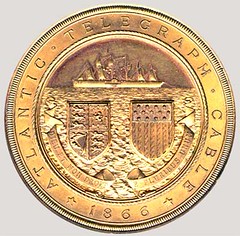
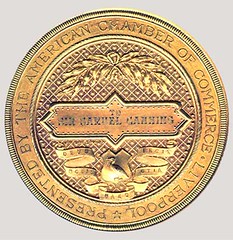
This medal is bronze with a heavy gold plating, 76mm in diameter, 206.8 grams.
All the documentation for these medals when they were in the planning stages refer to an order for four medals in gold, but this one is gilt bronze, as is one of the two Cyrus Field copies at the Metropolitan Museum of Art in New York.
To visit the web site, see:
Cyrus W. Field Medals. Other Cable Medals and Tokens, including Great Eastern
(http://atlantic-cable.com/Medals-Tokens/index.htm)

A VISIT TO THE CARNEGIE HERO FUND COMMISSION
George Cuhaj forwarded this New York Times article on Carnegie Hero medals and the Commission that awards them. Thanks! -Editor
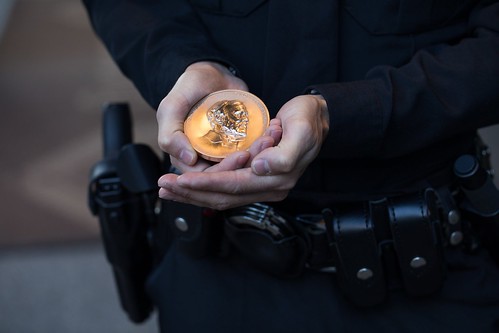
... a person expiring between the ages of one and 44 years is more likely to fall under what the charts render a yawning wedge of bilious turquoise: the color of dying by accident.
What cannot be gleaned from such charts are accidents that are thwarted — or the names of the people who attempted to thwart them. Acknowledging them is the self-appointed task of the Carnegie Hero Fund Commission: a private foundation that identifies and rewards members of the public for being heroes.
Year-round, a small team of office workers endeavors to analyze the seconds when somebody intervenes to try to prevent death or serious injury. From a tidy headquarters in downtown Pittsburgh, they laboriously collect and scrutinize newspaper stories, hospital records, fire marshal reports, witness statements, family interviews, location sketches, tide charts, photographs of charred clothing, stairway dimensions, expert testimony on seasonal bear activity — anything they can get their hands on to better understand those calamitous situations in which outsiders intervened.
The Hero Fund’s task is not to assign blame, nor to explain why something happened. It is to identify those mere mortals who attempted individually, and bodily, to disrupt the relentless course of fate. And to send them a check for $5,500 and a hand-struck medal on behalf of humankind.
The paychecks for those who do this work arrive courtesy of a man who died 100 years ago. It is a testament to the magical ability of money to become more money that Andrew Carnegie’s gift of $5 million in 1904 has enabled the Carnegie Hero Fund Commission to distribute $41.3 million — and 10,135 medals — to individual heroes over the last 115 years.
Hero Prerequisites
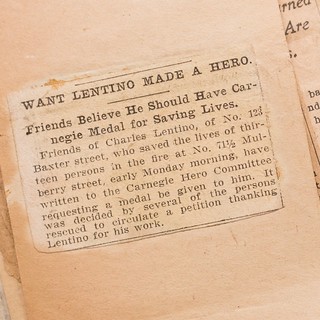 The official requirements to become a Carnegie hero are brief and broad, but only people who act heroically within the United States and Canada are eligible. (A few
European variants of the fund, likewise started by Andrew Carnegie, operate independently.) At a minimum, a “hero” must leave a place of safety and risk death to attempt to save
the life of someone whom they have no responsibility to help. The attempt may fail and still be recognized, as long as it was done with courage. Acts must be brought to the fund’s
attention within two years of their occurrence.
The official requirements to become a Carnegie hero are brief and broad, but only people who act heroically within the United States and Canada are eligible. (A few
European variants of the fund, likewise started by Andrew Carnegie, operate independently.) At a minimum, a “hero” must leave a place of safety and risk death to attempt to save
the life of someone whom they have no responsibility to help. The attempt may fail and still be recognized, as long as it was done with courage. Acts must be brought to the fund’s
attention within two years of their occurrence.
The award is open to civilians only; soldiers cannot win, nor can rescue professionals unless they have acted far outside the scope of their usual duties. (For instance: An off-duty firefighter recovering from shoulder surgery in British Columbia in 1997, recognized for her efforts to drive off a bear as it mauled a man to death, was Hero #8281).
Individuals previously convicted of crimes are eligible. (“Heroes deserve pardon and a fresh start,” the official 1904 deed of trust declares.) Hero #5969 received his award for a split-second decision to launch his body at an active shooter in Michigan in 1970. At the time, both shooter and hero were being transferred between prison facilities in the back of a police sedan; the hero was still shackled. Many, many heroes have been awarded for tackling armed gunmen. They include a street cleaning commissioner, a human resources director, an exotic dancer, several teachers, a data analyst, a barber, a telemarketer, a newspaper editor, a bricklayer, an investment adviser, and a county jail elevator operator whose parents were born enslaved.
To separate the wheat of true heroism from the chaff of acts that are merely extremely admirable, the fund requires “conclusive evidence to support the act’s occurrence.” The gathering of such evidence falls to a team of four investigators.
Human and animal attack cases typically get the most attention when Carnegie awards are announced every quarter, said Eric Zahren, the fund’s president. “It just affects the psyche a little bit differently than natural perils like drowning, burning.”
Before he became president, Mr. Zahren spent 25 years in the Secret Service, retiring as the special agent in charge of the Pittsburgh field office. “In my last career, I dealt a lot with the darker side of human nature,” he said.
Even the bleakest Carnegie stories, by contrast, strobe with flashes of good will. Inherent in every heroic attempt is hope. Many heroes escape not just with their own lives, but having rescued someone else.
I had the pleasure of visiting the Carnegie Hero Fund Commission offices in Pittsburgh in preparation for the 2004 ANA World's Fair of Money. As the show's Chairman I helped organize a special exhibit of the Carnegie Hero medals and became a collector of them myself. Each one has an amazing story to tell. -Editor
To read the complete article, see:
What Makes an American Hero? (Or a Canadian One?)
(https://www.nytimes.com/2019/12/12/style/carnegie-hero-fund.html)

TOKYO 2020 OLYMPIC GAMES MEDAL DESIGN
I came across an article on the Tokyo 2020 Olympics site with information on the design of next years' medals. -Editor
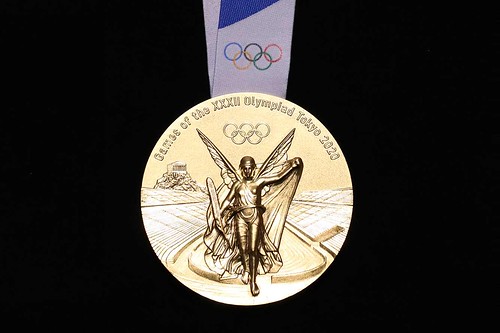
The design of the Tokyo 2020 Olympic Games medals reflects the concept that in order to achieve glory, athletes have to strive for victory on a daily basis. The medals resemble rough stones that have been polished and which now shine, with “light” and “brilliance” their overall themes. The medals collect and reflect myriad patterns of light, symbolising the energy of the athletes and those who support them; their design is intended to symbolise diversity and represent a world where people who compete in sports and work hard are honoured. The brilliance of the medals’ reflections signifies the warm glow of friendship depicted by people all over the world holding hands.
In order to come up with a range of designs from which to choose, Tokyo 2020 held a competition open to professional designers and design students which attracted more than 400 entries.
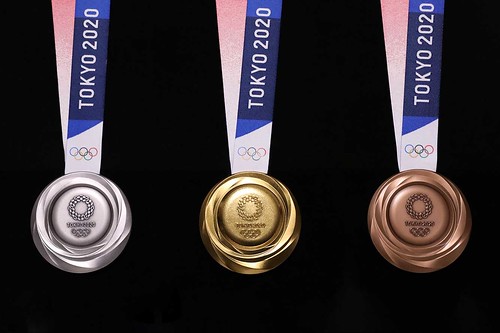
To read the complete article, see:
Tokyo 2020 Olympic Games Medal (https://tokyo2020.org/en/games/medals/olympic-design/)
THE BOOK BAZARRE
HOW MUCH CASH IS IN HIDING?
This week the Wall Street Journal published an article about the large amount of hoarded, unaccounted-for cash around the globe, and the clever ways some economists are trying to estimate its value. -Editor
 Some Australians are burying it. The Swiss might be hiding it. The Germans are probably hoarding.
Some Australians are burying it. The Swiss might be hiding it. The Germans are probably hoarding.
Banks are issuing more notes than ever and yet they seem to be disappearing off the face of the earth. Central banks don’t know where they have gone, or why, and are playing detective, trying to crack the same mystery.
Following the money trail can often mean encountering a motley cast of characters that wouldn’t look out of place in a detective novel. Dollar bills are often vital grease for criminal gangs and tax cheats. They are also popular with collectors who worry about a future collapse of the financial system.
Bankers aren’t just hunting down cash to satisfy their own curiosity. If central banks don’t know how much cash is out there, they could print too much currency and risk inflation.
In September, a court in Germany ruled on a case brought by a man who stuffed more than 500,000 euros in a faulty boiler only to see it incinerated when a friend made a fix on a cold day while he was on vacation. The man sued his friend for the value of the lost bank notes plus interest. He lost.
The Bundesbank thinks more than 150 billion euros are being hoarded in Germany.
The Reserve Bank of Australia’s Note Issue Department decided to take an unusual approach: could fire-damaged bank notes help to determine how much money is being hoarded? Analysts even devised an equation based on the value of claims submitted by households for new bank notes to replace those that had been damaged by fires.
It didn’t work.
Officials at the Swiss National Bank ran with another theory: hoarded bank notes should wear out less because they aren’t being used for everyday transactions.
Demand for high-denomination bank notes tends to rise when interest rates are low, households feel distrustful of the banking system or people want to make transactions anonymously.
Generally, SNB officials found that hoarding of Swiss francs jumped around the year 2000, likely motivated by fear of the Y2K bug infecting computer systems, the bursting of the dot-com bubble, the September 11 terrorist attacks and introduction of the euro. The financial crisis that began in 2007 encouraged people to stash even more.
“Our sense is that we’re in the same boat as a lot of other central banks out there,” said Christian Hawkesby, assistant governor at the RBNZ. “We can’t fully explain why holdings of cash are rising and where they are going.”
To read the complete article (subscription required), see:
The World’s Cash Is Disappearing. Bankers Aren’t Sure Where It
Went. (https://www.wsj.com/articles/the-worlds-cash-is-disappearing-bankers-arent-sure-where-it-went-11576184491)

LOOSE CHANGE: DECEMBER 15, 2019
Here are some additional items in the media this week that may be of interest. -Editor
Winners and Losers at the US Mint in 2019
A CoinWeek article by Joshua McMorrow-Hernandez calls out "Winners and Losers at the US Mint in 2019". -Editor
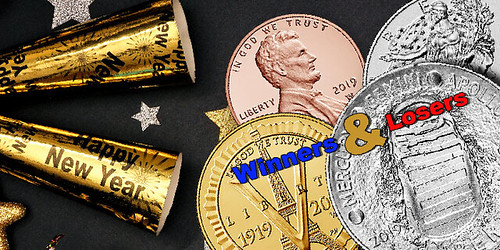
The United States Mint had a busy year in 2019, which isn’t surprising given the amazing pace at which it has been producing new collectible coins and other products in recent years. The Mint’s catalog has been growing in size for many years now, and it’s stuffed annually with a variety of coins, sets, and other items for virtually every collector taste imaginable. Many of these items sell with a respectable degree of success. Of course, some have performed much better than others, and several have failed miserably when it came to impressing collectors.
So what are the biggest winners and losers from the United States Mint in 2019? Using a combination of sales figures and general customer interest in the Mint’s various coins and products sold in 2019, let’s review a rundown of a few of the year’s highlights and lowlights.
To read the complete article, see:
The Year That Was: Winners and Losers at the US Mint in 2019
(https://coinweek.com/modern-coins/the-year-that-was-winners-and-losers-at-the-us-mint-in-2019/)
Another Salvation Army Kettle Coin
Last week we discussed an encapsulated coin said to be worth about $2,000 that was dropped into a Salvation Army collection kettle in Tampa, FL. -Editor
A mysterious do-gooder in Tampa is being thanked for their generous donations to a local Salvation Army kettle.
The mystery donor left two rare and valuable coins in the kettle in the last two weeks.
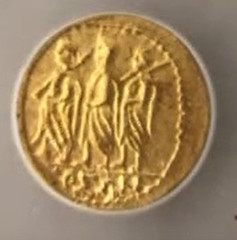 The mystery coin donor first struck a week ago on Dec. 6. They left a Thracian Kings gold Greek coin from the years 44-42 BC inside the kettle.
The mystery coin donor first struck a week ago on Dec. 6. They left a Thracian Kings gold Greek coin from the years 44-42 BC inside the kettle.
Then on Thursday, they struck again.
This time the coin, again a Thracian Kings gold Greek coin from the years 44-42 BC, came with clues and a higher value.
The mystery donor wrapped the coin in a single dollar bill with a note.
“My hope is to continue drawing attention to such a wonderful organization. The whole country should know about the amazing things The Salvation Army does for their community.”
According to the Salvation Army, this coin is estimated to be worth $3,000.
To read the complete article, see:
Mystery coin donor: Who
is leaving rare, valuable coins in one Tampa Salvation Army kettle?
(https://www.abcactionnews.com/news/region-hillsborough/mystery-coin-donor-who-is-leaving-rare-valuable-coins-in-one-tampa-salvation-army-kettle)
To read the earlier E-Sylum article, see:
LOOSE CHANGE: DECEMBER 8, 2019 : Ancient Gold Coin Dropped in Salvation Army Kettle
(https://www.coinbooks.org/v22/esylum_v22n49a24.html)
Chinese Coin from the Ocean City, NJ Wreck of the Sindia
This story from Ocean City, NJ is well worth reading for the historical intrigue surrounding this ship owned by oil tycoon John D. Rockefeller and a "secret shipment of contraband Chinese silver". -Editor
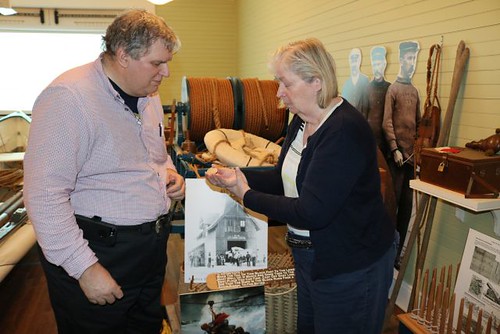
It was just a small piece of history, but the impact on Gail Powell was huge.
As she stared at the old Chinese silver coin resting in the palm of her hand, Powell uttered “absolutely incredible” as though she was looking at a priceless artifact.
Her fascination with the coin really had little to do with its origins in China. She was more interested in the fact that it was part of the cargo recovered from the legendary Ocean City shipwreck, the Sindia.
Efforts proved futile to pull the Sindia off the sandbar that would serve as its final resting place after running aground just off the beach between 16th and 17th streets on Dec. 15, 1901. The steel-hulled ship eventually broke apart, but pieces of the wreck remained visible for more than 80 years.
Sindia became part of Ocean City’s folklore because it lasted so long. Instead of disappearing under the waves in one dramatic, final act, the shipwreck slowly deteriorated over time. It immediately became a huge tourist attraction in 1901.
“People came from all over to see this shipwreck. They came by train, they lined the Boardwalk. It was a big event,” Loeper explained in a presentation to history buffs and other visitors to the Life Saving Station.
To read the complete article, see:
A Century Later, Sindia Shipwreck Continues to Fascinate
(https://ocnjdaily.com/a-century-later-sindia-shipwreck-continues-to-fascinate/)
The US Mint Coins Dated 1964
This week David Lange published of the NGC blog the concluding segment of his USA Coin Album series for The Numismatist on "The US Mint Coins Dated 1964", a carefully-worded title. -Editor
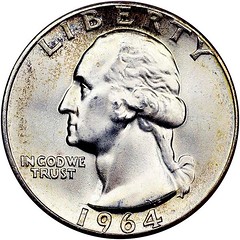
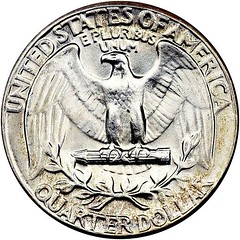
Being such widely used coins, it was essential that there be no shortage of quarter dollars in circulation. Silver pieces dated 1964 were struck right into the early months of 1966, even though the new copper-nickel-clad edition already had been released in large numbers during November of 1965. Due to the date freeze authorized in 1964, all of the silver coins bore that date alone.
This backdated coinage was believed necessary to maintain the illusion that silver coins were not being hoarded by speculators. President Lyndon B. Johnson proclaimed that the two issues would circulate side by side for years to come, but most of the newly minted silver coins ended up in the hands of those very hoarders. Entire $1000 bags of uncirculated 1964(P) and 1964-D quarters survived for decades afterward, though many were lost to smelters during the record silver prices of 1979-80.
To read the complete articles, see:
USA Coin Album: The US Mint Coins Dated 1964 — Part 1 (https://www.ngccoin.com/news/article/7694/)
USA Coin Album: The US Mint Coins Dated 1964 — Part 2
(https://www.ngccoin.com/news/article/7777/USA-Coin-Album/)
USA Coin Album: The US Mint Coins Dated 1964 — Part 3
(https://www.ngccoin.com/news/article/7845/USA-Coin-Album/)
USA Coin Album: The US Mint Coins Dated 1964 – Conclusion (https://www.ngccoin.com/news/article/7912/)

MAN'S MISSION TO PHOTOGRAPH SITES ON BANKNOTES
Found via the December 10, 2019 News & Notes from the Society of Paper Money Collectors is this great story about a man's quest to travel the world photographing sites depicted on banknotes. The article is from CBC News on the occasion of his visit to Winnipeg, Canada. -Editor

One man is making it his mission to photograph the buildings and landmarks seen on currency from around the world, which brought him to Winnipeg to see the Canadian Museum for Human Rights on our $10 bill.
It all started when Emaad Paracha was in his home country of Pakistan in 2015, and wanted to see the ruins depicted on a 20-rupee note. He posted a photo of the site online, and people loved it.
"I thought, hey might as well do it with the rest of the currency, and that's how it sort of came about," he said.
So far, Paracha has been to parts of the United States, Canada, United Arab Emirates, and other regions of Pakistan to photograph sites seen on different currencies. Because he now lives in Toronto, the Canadian Museum for Human Rights was an easy one to check off his list, he said.
"I found it [the museum] really cool especially when the tour guides inside they explained and they explained the whole meaning behind the architecture," he said.
Other sites have been more challenging to get to and photograph. This summer, he spent two weeks hiking to K2, the second-highest mountain on earth, which is shown on Pakistan's 50-rupee note.
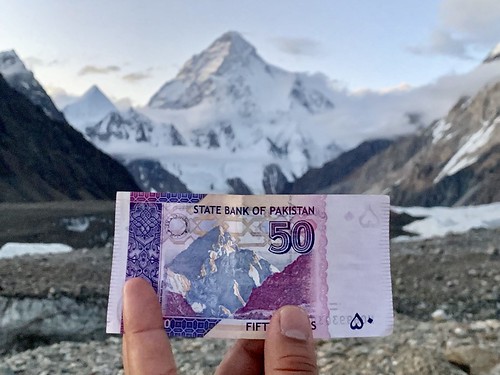
"[There were] no phones, no nothing, just walking 30 kilometres a day, on mountains, just to be able to take that one picture. And that's what I did this summer," he said.
Paracha is a web designer, and says he's able to afford his travels by planning ahead, looking for cheap flights, and traveling with friends who he can split the costs with.
Paracha travelled to Washington to photograph the Capitol Building of the United States with the $50 note bearing it on the back.
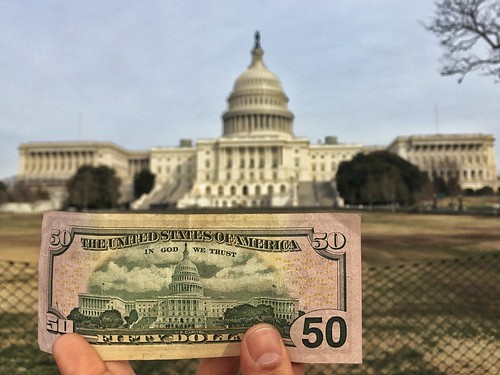
What a great adventure! Super idea, and tailor-made for the Instagram generation. See his website for more great images. He's also visiting sites depicted on coins. -Editor
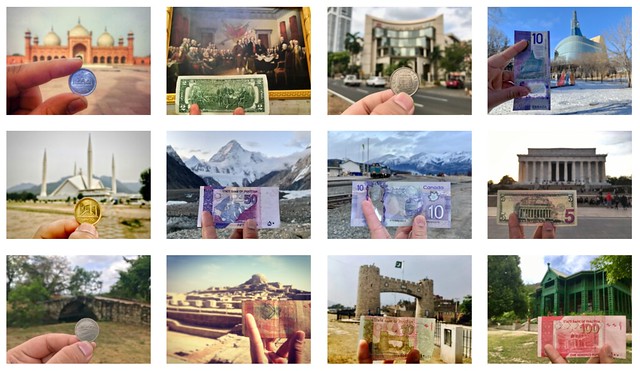
To visit the Currency Project web site, see:
The Currency Projrect (http://currencyproject.co/)
To read the complete article, see:
Man's mission to photograph sites on currencies around the world brings him to
Winnipeg (https://www.cbc.ca/news/canada/manitoba/emaad-paracha-currency-photo-project-1.5386466)
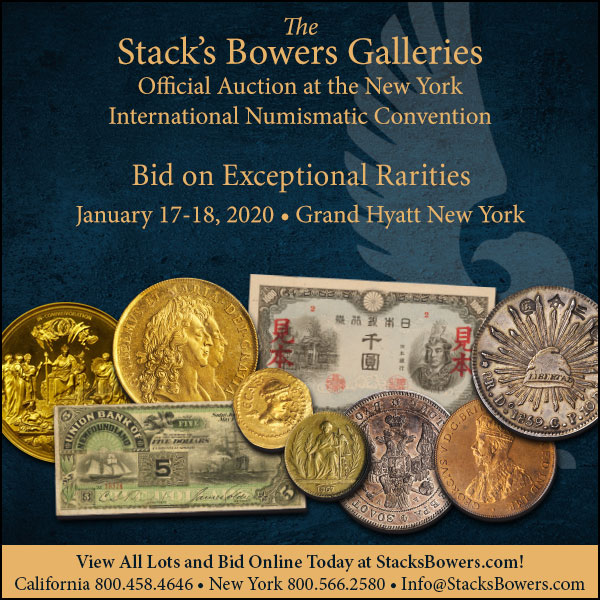
FEATURED WEB SITE: AETERNITAS NUMISMATICS
This week's Featured Web Site is the commercial site Aeternitas Numismatics, which holds their blog in ancient coinage.The authors of this blog are History and Numismatics lovers specialized in ancient coinage.
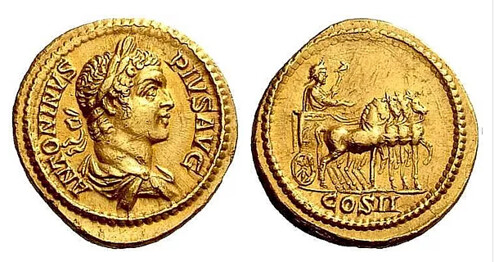
www.aeternitas-numismatics.com


